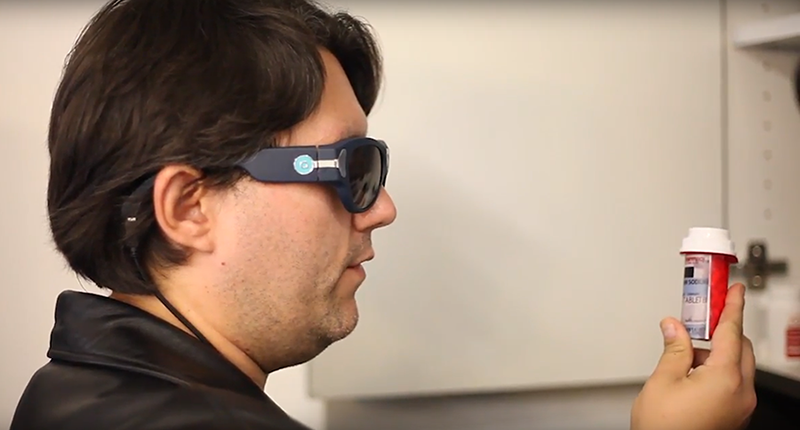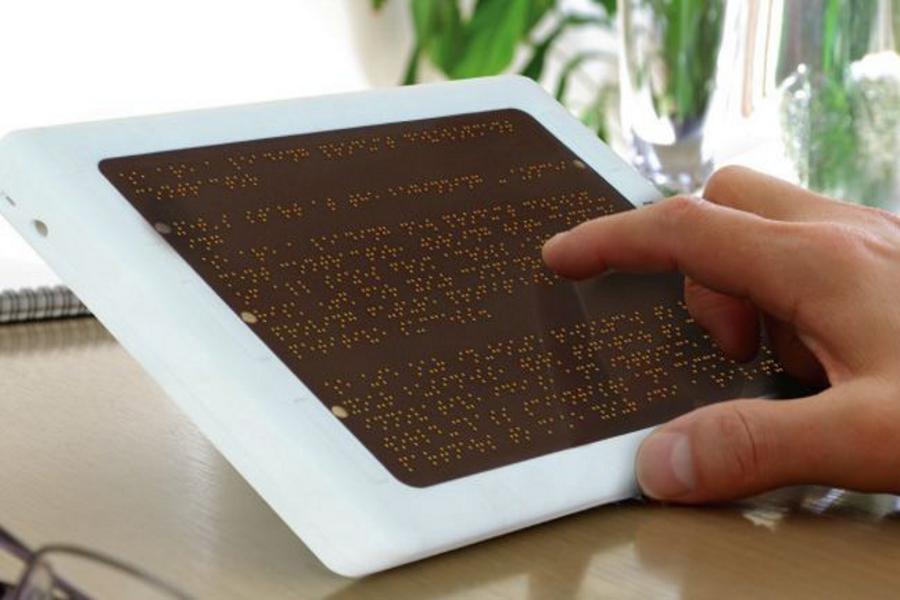Speech-to-Text Devices for Low Vision: Bridging the Communication Gap
Discover Ingenious Tools Made for the Aesthetically Impaired
The growth of ingenious devices for the visually damaged represents a substantial development in ease of access and freedom. Technologies such as wise glasses with AI capabilities and mobile applications created to provide auditory summaries are reshaping day-to-day experiences for users.
Smart Glasses for Navigating

Smart glasses created for navigation are revolutionizing the method visually impaired people engage with their atmosphere. These advanced tools use a combination of camera modern technology, expert system, and acoustic responses to give real-time info about environments. By utilizing obstacle discovery systems, clever glasses can inform users to possible dangers, enabling more secure flexibility in both strange and familiar setups.
The combination of GPS modern technology further enhances navigating capabilities, enabling users to receive acoustic directions as they relocate. This hands-free method not just fosters independence yet likewise encourages visually damaged individuals to navigate urban landscapes with raised confidence. Additionally, lots of wise glasses are equipped with functions that determine landmarks and street indicators, supplying contextual information that boosts the customer experience.
Furthermore, the growth of these devices is constantly progressing, with companies working to boost the precision of object recognition and expand the variety of navigational features. As wise glasses come to be more cost effective and available, they hold the prospective to dramatically transform day-to-day live for aesthetically damaged users. Eventually, these ingenious devices stand for an essential action toward inclusivity, offering improved wheelchair and a better feeling of freedom for individuals navigating the globe around them.

Mobile Apps for Daily Living
Exactly how can mobile applications boost the lives of aesthetically impaired individuals? Mobile applications are transforming the method visually damaged individuals browse their environments, take care of everyday tasks, and gain access to info. These applications give crucial support with numerous performances, cultivating independence and improving quality of life.
A number of cutting-edge mobile applications are developed particularly for day-to-day living. Applications like Be My Eyes attach aesthetically damaged users with sighted volunteers through video phone calls, permitting them to obtain real-time aid with jobs such as reading labels or navigating unknown areas. Likewise, Seeing AI, created by Microsoft, uses man-made knowledge to define environments, reviewed message, and determine things, effectively changing a smart device right into an effective device for everyday aid.
Additionally, navigation apps tailored for the visually impaired, such as Aira and BlindSquare, provide audio-based directions and ecological info, allowing users to traverse their environments securely and confidently. Beyond navigating and instant support, mobile applications likewise support company and task management, with features that aid customers establish pointers, develop to-do listings, and track consultations. In recap, mobile applications function as important resources, encouraging visually damaged people to lead more independent and satisfying lives.
Wearable Technologies for Support
Empowerment via innovation is increasingly noticeable in the realm of wearable devices developed to aid visually damaged individuals. These cutting-edge tools incorporate seamlessly into life, enhancing navigation and giving important feedback to individuals. Smart glasses furnished with electronic cameras can acknowledge faces and read text out loud, permitting users to communicate even more with confidence in social and expert setups.
Another noteworthy improvement is the use of haptic feedback systems in wearable gadgets. These systems make use of resonances or various other tactile signals to convey information concerning the user's atmosphere, such as challenges or adjustments in surface, enhancing flexibility and safety. Wearable innovations likewise consist of wristbands that link to smart devices, signaling users to notices with subtle vibrations, therefore improving connectivity without dependence on aesthetic hints.
As these innovations proceed to progress, they are not only enhancing self-reliance for visually damaged individuals yet additionally fostering a greater feeling of inclusion in society. By connecting the gap between challenges encountered in everyday living and the capacity for autonomy, wearable innovations offer as crucial tools in the pursuit for equality and empowerment for those with visual problems.
Sound Description Devices
Audio summary tools play an essential role in enhancing ease of access for visually damaged people, providing them with the capability to engage with aesthetic media. Wearable technology for low vision. These tools supply narrated summaries of crucial visual components in films, tv shows, and live performances, ensuring that customers can fully understand the context and emotions shared with visuals
Audio description can be integrated right into different systems, including streaming solutions, cinema testings, Find Out More and live movie theater. Many prominent streaming solutions now include audio summary as an access function, permitting customers to select it quickly. In addition to mainstream media, specialized applications additionally exist, offering audio summaries for art events, museums, and various other cultural occasions.
The effectiveness of audio summary rests on the skill of the storytellers, that have to share visual details succinctly without taking away from the original sound. Technologies in this field are additionally paving the method for even more tailored experiences, where users can change the degree of detail and pacing according to their preferences.
Braille Innovations and Instruments
Braille advancements and tools have actually significantly transformed the method aesthetically damaged people engage with text and info. Modern innovations have actually led to the development of functional tools that improve proficiency and independence among individuals.
Additionally, mobile Braille notetakers combine standard Braille input with modern capabilities, helping with note-taking, scheduling, and record editing and enhancing on the go. Mobility aids for visually impaired users. These compact devices commonly include text-to-speech abilities, connecting the space between Braille and auditory info
In enhancement, cutting-edge Braille printers have actually emerged, permitting customers to produce Braille labels, files, and instructional products effectively. This accessibility fosters greater participation in academic and specialist environments, inevitably advertising inclusivity.
Moreover, research study into clever Braille modern technologies remains to broaden. Instruments that include expert system are being discovered to provide real-time navigation aid and contextual details, improving the individual experience in varied setups. In general, these advancements mirror a commitment to empowering aesthetically damaged people with modern technology, guaranteeing they can conveniently access and engage with the globe around them.

Conclusion
The innovation of cutting-edge devices for the visually damaged significantly enhances freedom and top quality of life. These technologies not only foster better incorporation yet likewise promote freedom in day-to-day activities, ultimately contributing to a more fair and easily accessible culture for aesthetically damaged people.
As clever glasses become extra affordable and available, they hold the possible to considerably transform day-to-day life for visually impaired individuals. Mobile applications are continue reading this revolutionizing the method aesthetically damaged users browse their settings, take care of everyday jobs, and accessibility information. Applications like Be My Eyes attach aesthetically impaired individuals with sighted volunteers via video clip telephone calls, allowing them to receive real-time investigate this site help with jobs such as reviewing tags or navigating unknown spaces.Furthermore, navigation apps tailored for the aesthetically damaged, such as Aira and BlindSquare, offer audio-based directions and ecological info, making it possible for users to traverse their surroundings safely and confidently.The development of ingenious tools for the visually impaired dramatically boosts freedom and quality of life.